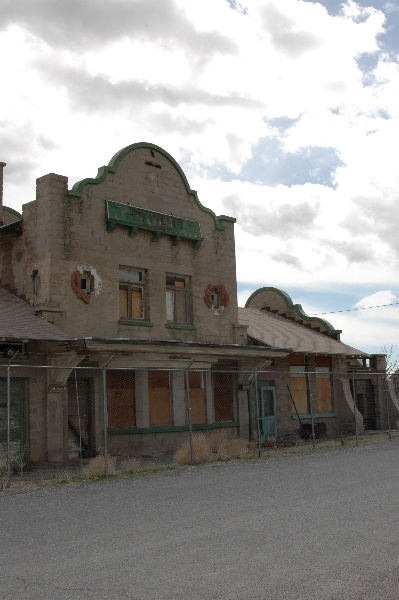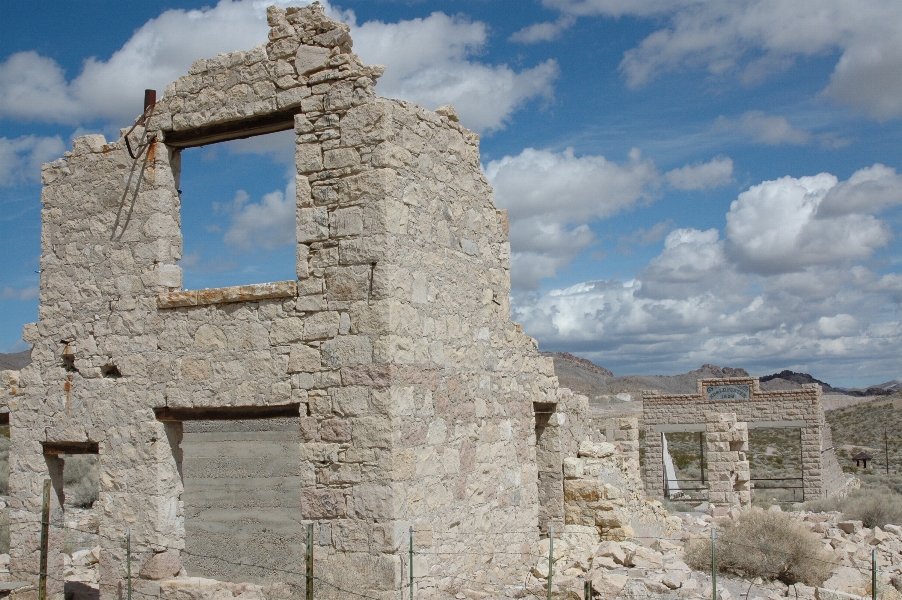
 |
Rhyolite is one of the best known ghost towns in America. It lies about 120 miles northwest of Las Vegas and just to the east of Death Valley. Rhyolite, like so many western boom towns, was the direct result of a major gold strike in the area. Gold was found in the area in 1904 and soon Rhyolite was a booming town. What was unusual is that the town had concrete sidewalks, electric, phone & telegraph service, a water system, and was served by three railroads. Soon the gold was mined out and in 1911 the Montgomery Shoshone Mine closed down leaving Rhyolite to become a ghost town.
| The Cook Bank is probably the most famous building in Rhyolite. The ruins give a hint to its former beauty. |  |
| The train station remains in the best condition of any building in town. It is fenced off so people can't damage the building. |  |
| The road running along the back of the station is built on the original rail bed. |  |
| The sign once announced the town of Rhyolite. It also advertised the Rhyolite Ghost Casino. |  |
| Although the Union Pacific did not serve Rhyolite, this caboose stands just behind the train station. |  |
| Once used as a gas station, the caboose has seen better years. |  |
| A small piece of western history. |  |
| This is the famous Bottle House built by Tom T Kelly in
1906. Rhyolite actually had 3 bottle houses. Other examples of bottle houses can be found various ghost towns in Nevada. None I've seen are in as good of condition as is this home. |
 |
| A close up of some of the whiskey bottles used to build the house. |  |
| The Cook bank was the pride of Rhyolite. |  |
| The brick work must have been beautiful. |  |
| I wonder how long these remaining ruins will stand? It looks like a strong windstorm would threaten to blow down this wall. |  |
| Although not clear in the photo, the concrete is reinforced with heavy wire cable similar to that used on the mine winches. |  |
| One last photo of the bank. |  |
| Other ruins dot the landscape giving silent testament to the size of this once bustling town. |  |
| The stairs are long gone. |  |
| The town had a two story school building. It was quite large for its time. |  |
| The Porter brothers opened a general store in 1906. They also owned a warehouse and lumber yard. |  |
| The Porter general store exhibits the type of brick work that was seen throughout the town. |  |
 |
|
| A couple of miner's shacks still stand. This one looks like it was built more recently than the rest of the town. |  |